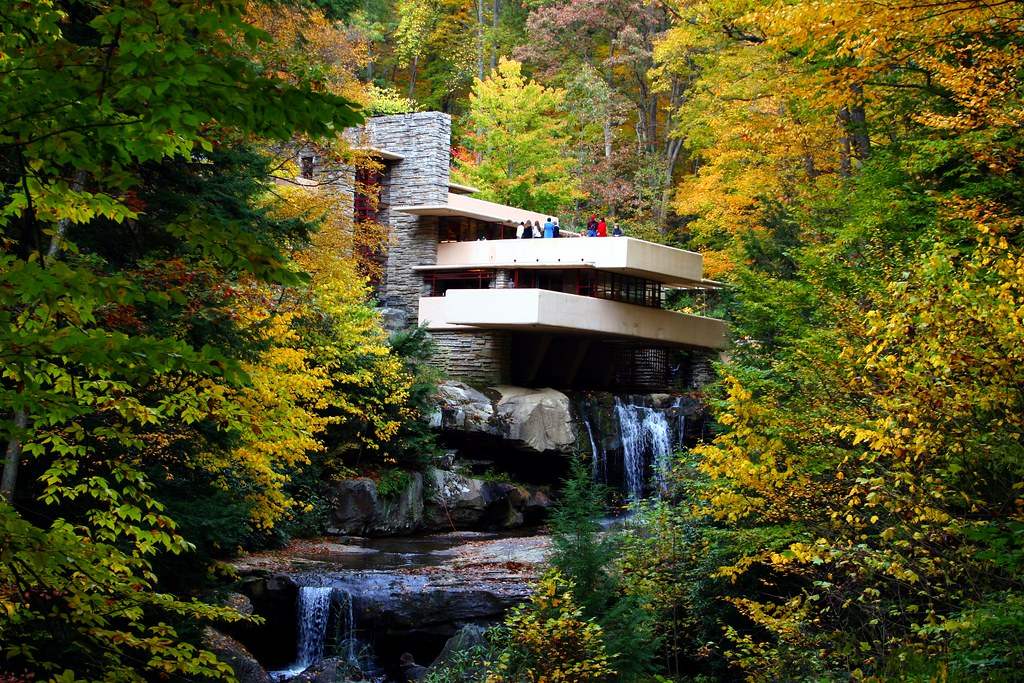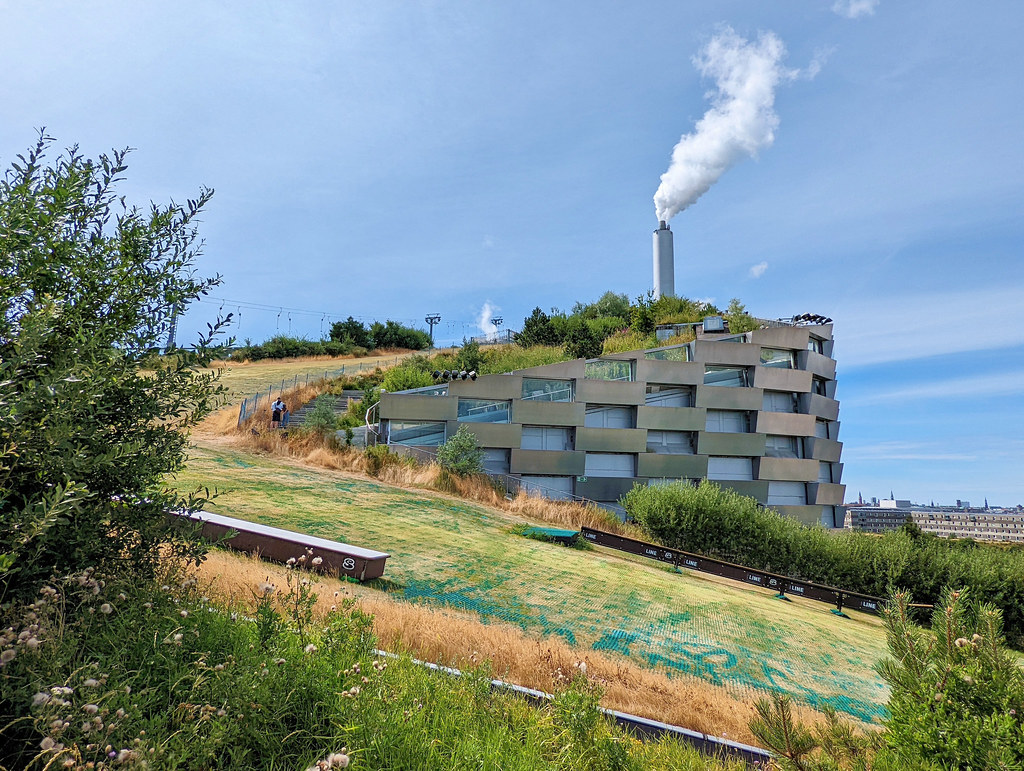Lily Vrionis
Lily Vrionis
Lily Vrionis. Environmental Architecture. © 2023. This work is licensed under CC BY 4.0 license.
Environmental architecture integrates sustainability into architectural design, bringing both aestheticism and consideration for environmental impact to something necessary for day-to-day life. It can be considered a form of “eco-art,” or “ecological art,” a contemporary form of art produced by artists concerned about environmental issues (Kathleen Deck, 2016). It goes beyond the traditional boundaries of architecture and encourages witnesses to be more environmentally conscious.
Themes
- Humans & Adaptability
- Passive Design & Sustainability
One of the core themes in environmental architecture is the focus on humans and adaptability. It acknowledges that buildings are not static and unchanging, but dynamic spaces that need to accommodate the ever-evolving needs and lifestyles of their occupants. This theme emphasizes the importance of architecture that responds to the changing requirements of individuals and communities. Environmental architecture calls for designs that facilitate well-being and connection to nature, allowing flexibility and adaptability to future needs. The focus on humans in the design process allows environmental architecture to promote physical and mental health, social interaction, and, of course, high awareness of environmental impact.
Another central theme is passive design and sustainability. Environmental architecture brings recognition that artificial environments, like city settings, have a significant impact on the planet’s resources and climate. Sustainable architecture seeks to minimize this environmental impact by employing passive design strategies to maximize energy efficiency. Passive design allows buildings to optimize the use of natural resources; environmental architects create spaces that naturally regulate temperature, lighting, and airflow (Autodesk Support, 2018). This type of design reduces greenhouse gas emissions and energy consumption, promoting sustainability and environmental wellness in the same breath.

Fallingwater
Frank Lloyd Wright, the creator of the building Fallingwater, once said, “study nature, love nature, stay close to nature. It will never fail you.” This quote perfectly captures the essence of environmental architecture, emphasizing the deep connection humans have with nature. Wright encourages artists to draw inspiration from the natural world and integrate its principles into their work.
The creation of this structure in 1937 was brought about by Wright’s beliefs that architecture should not only occupy the natural landscape’s space and use its materials, but also reveal the hidden qualities within (Alicja Zelazko, 2023). Fallingwater’s existence brings forth to occupants a greater connection with the natural world, all while transcending what was expected of architecture at the time it was designed. “This delicate synthesis of nature and the built environment probably counts as the main reason why Fallingwater is such a well-loved work.” (Franklin Toker, 2003). Today, this building serves as a great example of how architecture can be exceptionally unique and push the boundary of what is possible, while not having a hazardous impact on the environment surrounding it.

Selgas Cano Office
A Selgas Cano Office partially submerged in the woods was designed by Spanish architects Jose Selgas and Lucia in 2006 (Brad Turner, 2009). This studio in the woods was inspired by simply one desire: to “work under the trees.” (Alicia Cervera, 2013). To achieve the strongest connection with the surrounding forest, the roof was made transparent; however, it is difficult to work in direct sunlight, so the desks were roofed by a colored fiberglass.
The office is colorful yet minimalistic, vibrant on the inside but designed to not disturb the visual of the forest environment. The list of materials used to create the building is short, containing only: trees, acrylic, polyester with fiberglass, plants, concrete, and wood (An Office In The Woods: Selgas Cano Architecture). With such an innovative design, this office should serve as an inspiration for future workplaces. A work environment centered around or based in nature can improve focus, increase creativity, and reduce stress (Libby Sander, 2017). A connection with nature is important to satisfy the human need to be outdoors and have a huge impact on mood.

CopenHill
In 2016, an innovative project was initiated with the aim of replacing a forty-year-old waste-to-energy plant while revolutionizing the concept of environmental architecture (Sebastian Jordana, 2011). This new plant would incorporate the latest technology in waste treatment and environmental sustainability in architecture. This project, CopenHill, was created with the ambition of adding functionality and beauty to the industrial landscape (Eric Baldwin, 2019).
CopenHill was designed to be more than an ordinary waste-to-energy plant. It seamlessly merged the necessities of an energy plant with the joys of a ski hill; by combining these seemingly disparate elements, CopenHill preserves and enhances the natural environment around it. This plant demonstrates that industrial facilities can coexist with recreational spaces while minimizing their environmental footprint. CopenHill’s groundbreaking design and commitment to sustainability moves it to the forefront of environmental innovation, serving as a model for future energy-to-waste plants and inspiring exploration of future possibilities in combinations of essential infrastructure with recreational amenities. CopenHill showcases how an integration of necessity and enjoyment in environmental architecture can contribute to a greener and more sustainable world.
Environmental architecture is significant to understanding the society within which it was created. It serves as a reflection of societal values, aspirations, and concerns regarding the environment. The makeup of environmentally conscious infrastructure, including the construction materials and design choices, reveals the society’s relationship with the environment and commitment to sustainable development. Environmental architecture communicates the level of awareness and prioritization of issues like climate change and resource conservation. Sustainable architecture can also serve as a form of visual storytelling, providing a tangible and observable record of societal characteristics. By looking closely at these structures, one could develop a deeper understanding of social and cultural contexts that shape these built environments.
Media Attributions
- fallingwater (autumn ed.) © happy via is licensed under a CC BY-NC-ND (Attribution NonCommercial NoDerivatives) license
- Selgascano – Selgas Cano Office 辦公室設計(Photography by Iwan Baan) © 準建築人手札網站 Forgemind ArchiMedia is licensed under a CC BY (Attribution) license
- The hill of Copenhill © Lars Plougmann is licensed under a CC BY-SA (Attribution ShareAlike) license

